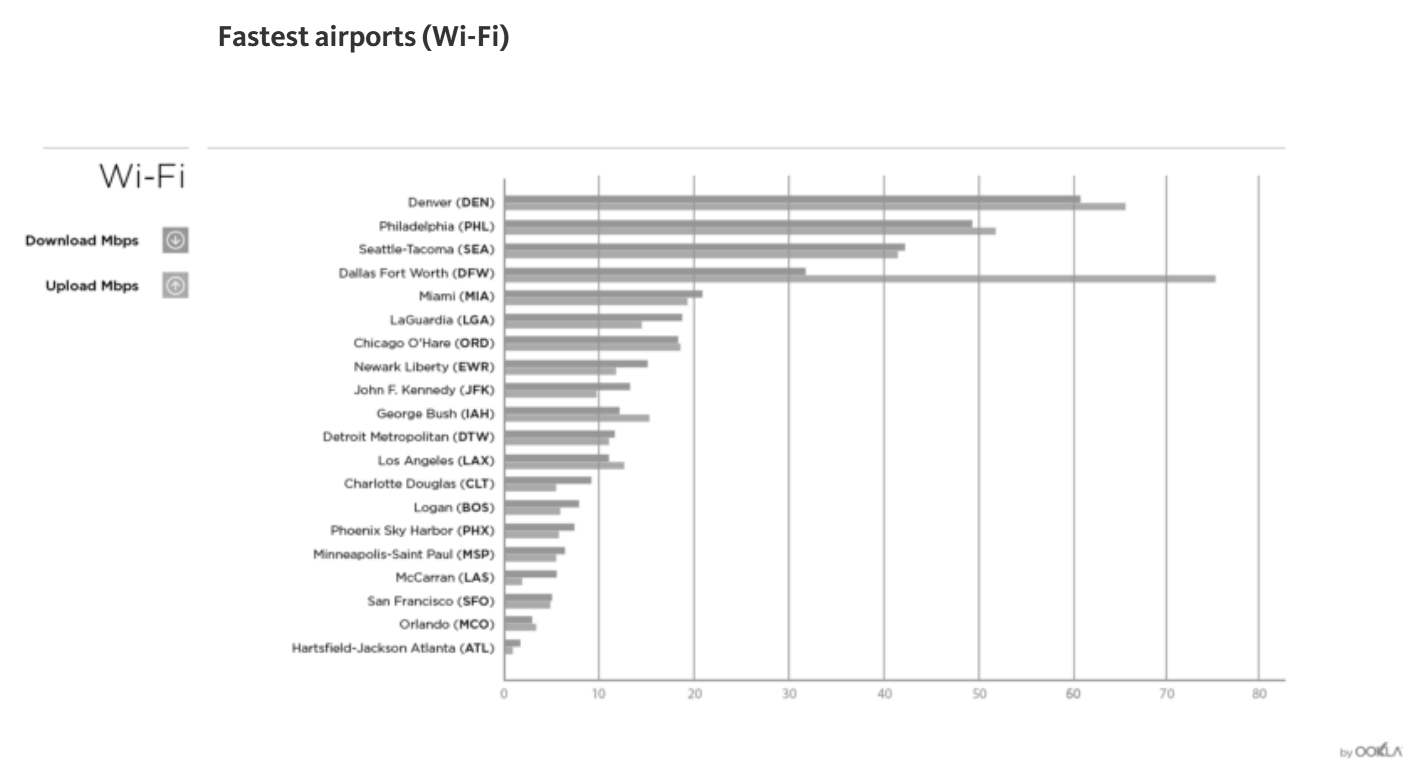If you happen to be flying through tiny Idaho Falls Regional Airport, you’ll be treated to Wi-Fi download speeds averaging more than 200 Mbps, faster than most people enjoy from their home Wi-Fi and more than enough to support such data-intensive activities as downloading and streaming movies. That’s according to tests conducted by Ookla, included in a new study of airport Wi-Fi speeds.
On the other hand, average Wi-Fi speeds at the nation’s largest airports are sometimes so slow that you’d be hard pressed to do anything more than check email. Download speeds at Atlanta airport, for example, averaged a dismal 2.71 Mbps. At the other extreme, Wi-Fi users at Denver International can stream high-definition movies at a brisk 61.74 Mbps, the fastest rate of any of the 20 largest U.S. airports.
In other words, your Wi-Fi experience may vary from airport to airport. A lot.
Here are the 20 largest U.S. airports ranked according to the average speeds of their public Wi-Fi networks, from fastest to slowest:
- Denver
- Philadelphia
- Seattle-Tacoma
- Dallas-Ft. Worth
- Miami
- LaGuardia
- Chicago O’Hare
- Newark Liberty
- New York-JFK
- Houston
- Detroit Metropolitan
- Los Angeles International
- Charlotte Douglas
- Boston Logan
- Phoenix
- Minneapolis-St. Paul
- Las Vegas
- San Francisco
- Orlando
- Atlanta
Wi-Fi Versus Cellular
Unless you have an unlimited data plan from your cellular carrier, you’ll most likely first try to connect to the Internet via an airport’s Wi-Fi before resorting to your limited cellular data plan. As it turns out, that may not be the best option if a fast connection is the priority.
The report compared the public Wi-Fi speeds with cellular speeds at the 20 largest airports, and the results were decidedly mixed. At nine airports, the public Wi-Fi was faster than the available cellular download speeds. And at 11 airports, cell speeds were faster.
So if you’re stuck waiting for a connecting flight in Atlanta, rather than suffer through 2.71 Mbps downloads via the airport’s Wi-Fi, switch over to your provider’s cellular service, which is almost 10 times faster, averaging more than 20 Mbps.
And wherever you happen to be, it’s worth comparing Wi-Fi and cellular speeds, to see which is faster. The differences can be significant.
Reader Reality Check
Was your strategy for getting a fast Internet connection when on the road?
After 20 years working in the travel industry, and almost that long writing about it, Tim Winship knows a thing or two about travel. Follow him on Twitter @twinship.
This article first appeared on SmarterTravel.com, where Tim is Editor-at-Large.


Leave a Reply